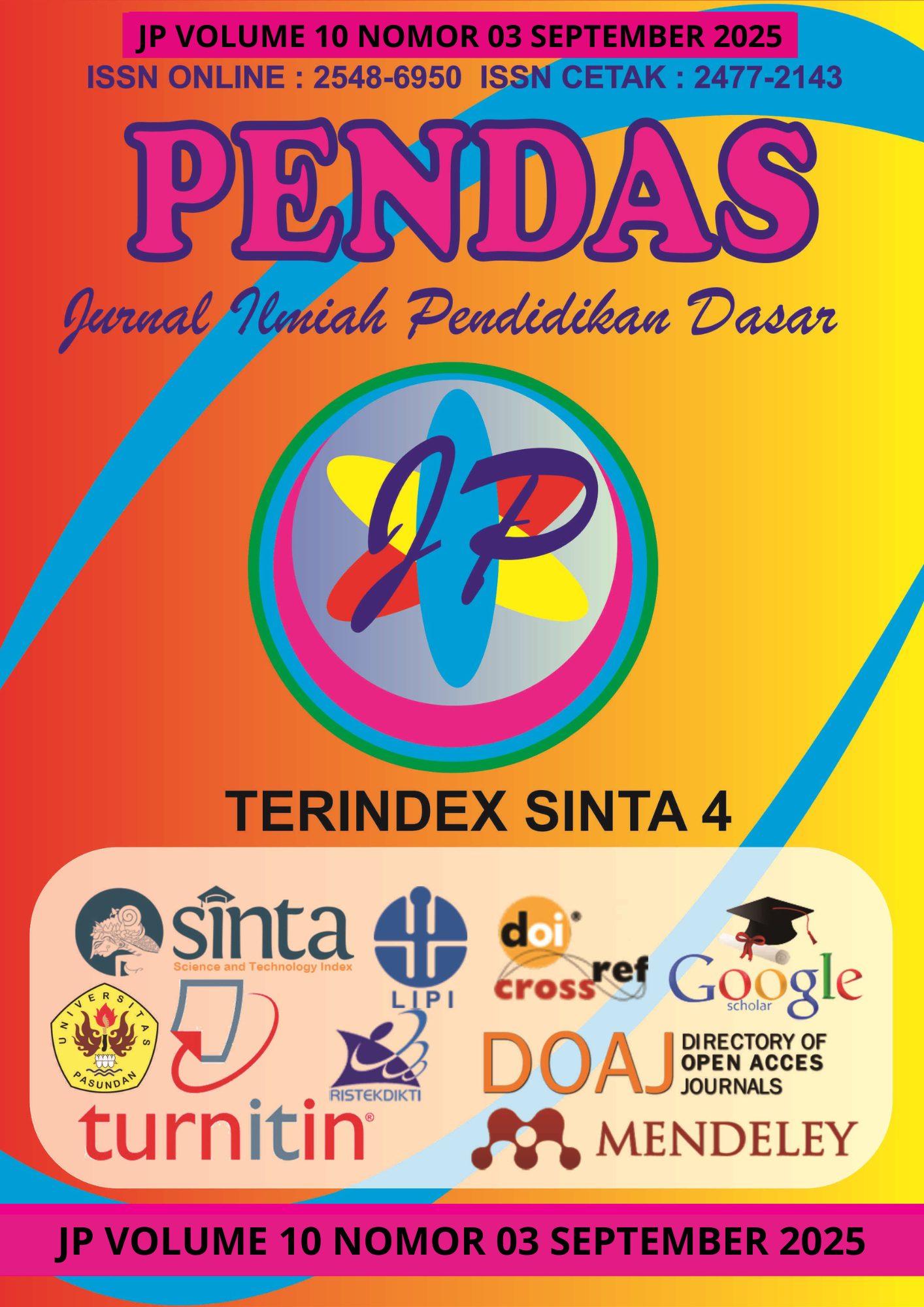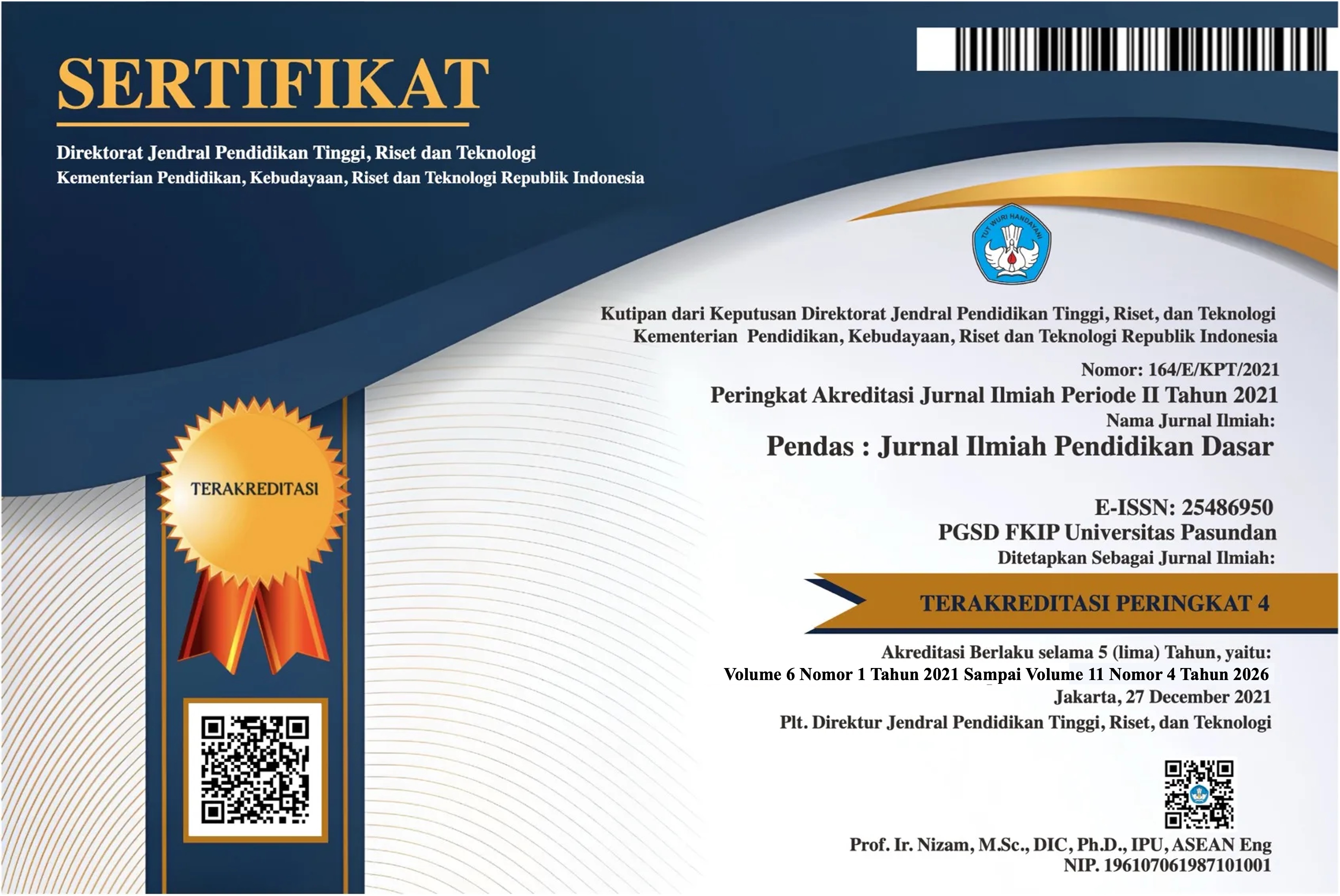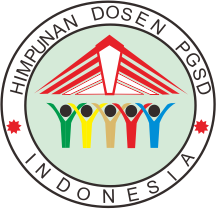PENGEMBANGAN BAHAN AJAR MATERI ALJABAR BERORIENTASI KEMAMPUAN REPRESENTASI MATEMATIS PESERTA DIDIK
DOI:
https://doi.org/10.23969/jp.v10i3.28483Keywords:
algebra, teaching materials, mathematical representation abilityAbstract
This research aims to develop an algebra teaching materials oriented toward students' mathematical representation ability for the junior high school (SMP/MTs) level. The research employs a Research and Development (R&D) method using the ADDIE model, which consists of five stages: Analyze, Design, Development, Implementation, and Evaluation. The validity of the teaching materials was assessed by material and media experts, and its effectiveness was tested on 36 eighth-grade MTs students. The material expert validation yielded an average score of 3.67, categorized as valid, while the media expert validation resulted in an average score of 4.00, also categorized as valid. Student response questionnaires on module attractiveness showed a score of 3.26 (very attractive) from a small group of 10 students and 3.28 (very attractive) from a larger group of 26 students. The module's effectiveness was measured using the N-Gain score, which reached 0.57 classified as moderate indicating the materials are fairly effective. It can be concluded that the algebra teaching materials developed in this study, oriented toward students’ mathematical representation ability, is highly suitable to be used as a learning resource for SMP/MTs students.
Downloads
References
Aisyah, S., Noviyanti, E., & Triyanto, T. (2020). Bahan Ajar Sebagai Bagian Dalam Kajian Problematika Pembelajaran Bahasa Indonesia. Jurnal Salaka : Jurnal Bahasa, Sastra, Dan Budaya Indonesia, 2(1), 62–65. https://doi.org/10.33751/jsalaka.v2i1.1838
Anggoro, B. S., & Fadila, A. (2019). pengembangan modul pembelajaran matematika materi statistika berbasis icare. 189–197.
Hartono, Firdaus, M., & Sipriyanti. (2019). Kemampuan Representasi Matematiak Dalam Materi Fungsi Dengan Pendekatan Open Ended Pada Siswa Kelas VIII MTs Sirajul Ulum Pontianak. Jurnal Eksponen, 9(1), 9–20.
Kharisma, J. Y., & Asman, A. (2018). Pengembangan Bahan Ajar Matematika Berbasis Masalah Berorientasi pada Kemampuan Pemecahan Masalah Matematis dan Prestasi Belajar Matematika. Indonesian Journal of Mathematics Education, 1(1), 34–46.
Manurung, J., Haloho, B., & Napitu, U. (2023). Mengembangkan Bahan Ajar Dalam Pembelajaran Ilmu Pengetahuan Sosial (Ips) di Sd. JUPE : Jurnal Pendidikan Mandala, 8(2), 676–683. https://doi.org/10.58258/jupe.v8i2.5596
Marhadi, S. N. L., Upuolat, H., Alting, N. A., & Hasan, R. (2023). Analisi Jenis-jenis Bahan Ajar dalam Proses Pembelajaran. Amanah Ilmu, 3(2), 63–75.
Mathematics, N. C. of T. of. (2000). Principles and Standards for School Mathematics. Reston: VA: National Council of Teachers of Mathematics.
Nurkholis. (2013). Pendidikan Dalam Upaya Memajukan Teknologi. Jurnal Kependidikan, 1(1), 24–44.
Nurmalasari, L., Akhbar, M. T., & Syaflin, S. L. (2022). Pengembangan Media Kartu Hewan dan Tumbuhan (TUHETU) Pada Pembelajaran IPA Kelas IV SD Negeri. Jurnal Riset Pendidikan Dasar, 5(1), 1–8. Retrieved from http://journal.unismuh.ac.id/index.php/jrpd
Puspandari, I., Praja, E. S., & Muhtarulloh, F. (2019). Pengembangan Bahan Ajar dengan Pendekatan Induktif untuk Meningkatkan Kemampuan Representasi Matematis Siswa SMP. Mosharafa: Jurnal Pendidikan Matematika, 8(2), 307–318. https://doi.org/10.31980/mosharafa.v8i2.564
Saputra, A. W., Nasution, M. D. C., Fauziah, E. M., Widayanti, L., Aldila, A. D., & Hakim, A. R. (2022). Menumbuhkembangkan Kemampuan Representasi Matematis Siswa dalam Pembelajaran Matematika. Jurnal Ilmiah Mahasiswa Pendidikan Matematika, 2(1), 49–60.
Wibowo, E., & Pratiwi, D. D. (2018). Pengembangan Bahan Ajar Menggunakan Aplikasi Kvisoft Flipbook Maker Materi Himpunan. Desimal: Jurnal Matematika, 1(2), 147. https://doi.org/10.24042/djm.v1i2.2279
Downloads
Published
Issue
Section
License
Copyright (c) 2025 Pendas : Jurnal Ilmiah Pendidikan Dasar

This work is licensed under a Creative Commons Attribution 4.0 International License.



















